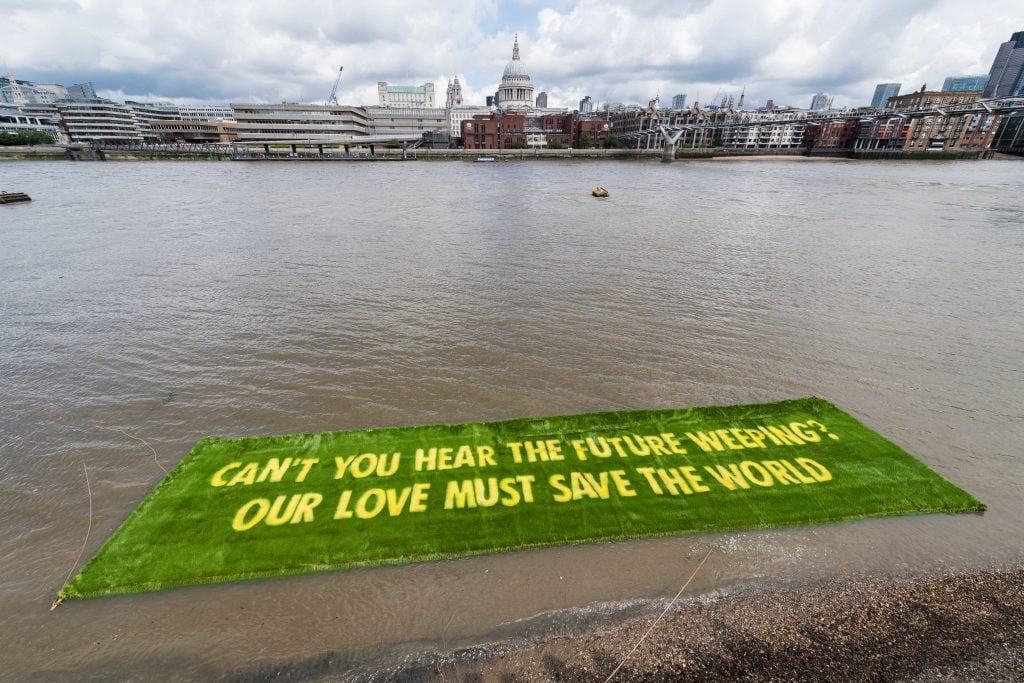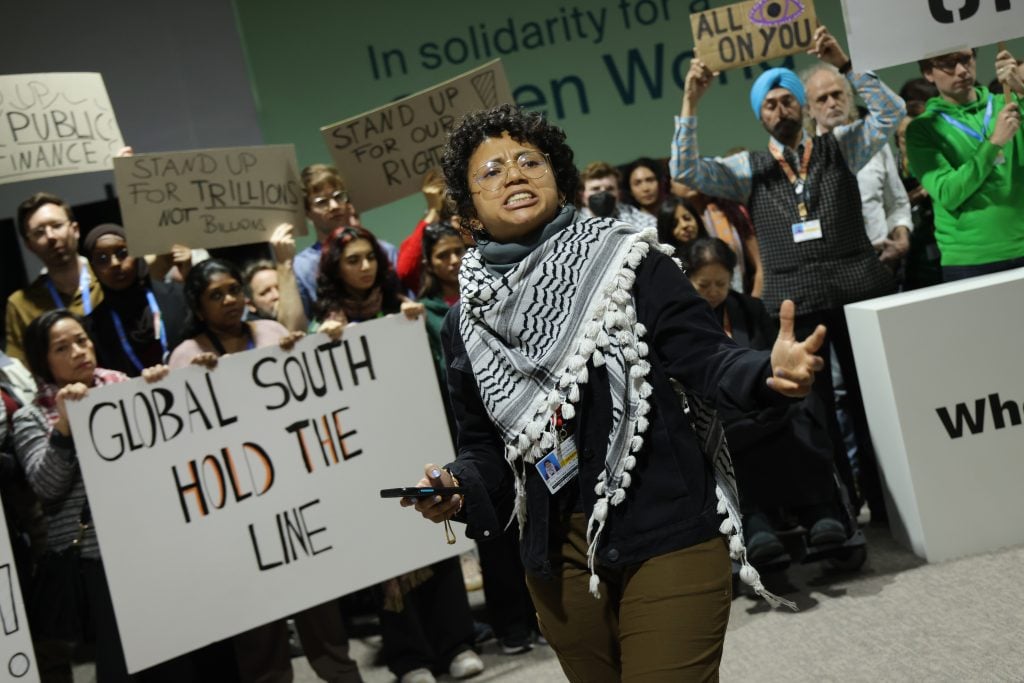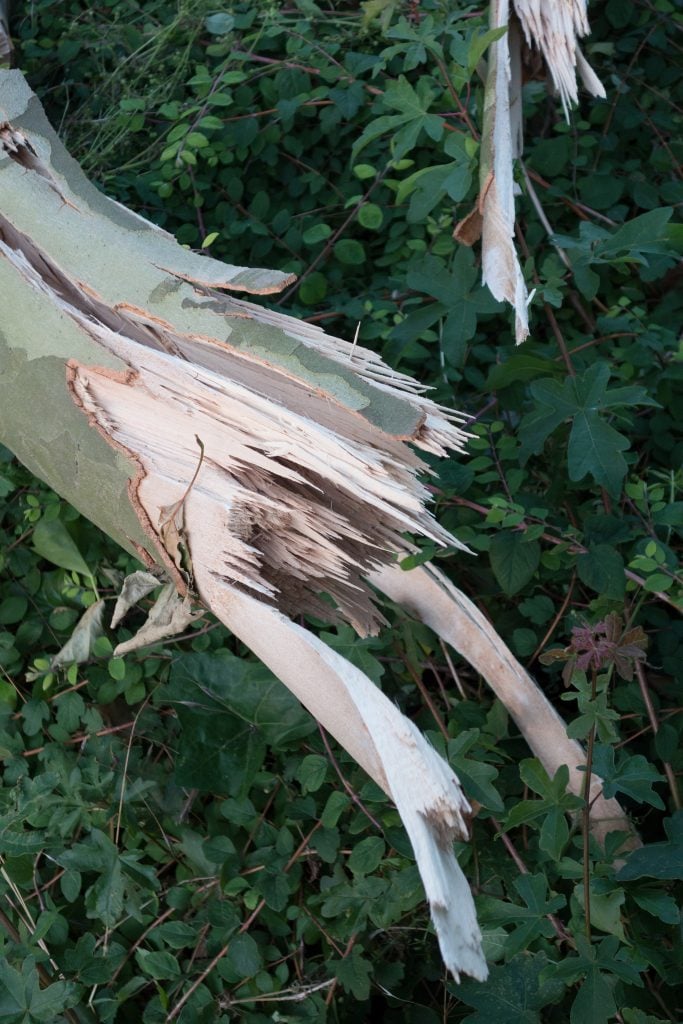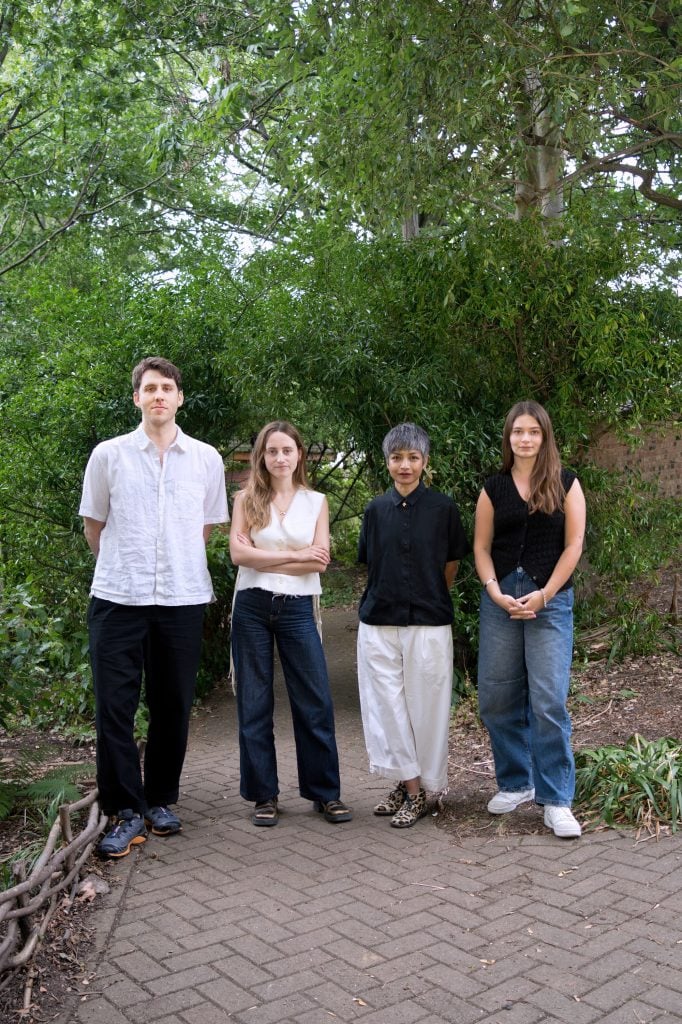Opinion
We’re at a Critical Juncture in the Fight for Climate Action. Here’s How the Art Industry Can Help
The arts are uniquely placed to inspire public and political action, according to Heath Lowndes of Gallery Climate Coalition.

The arts are uniquely placed to inspire public and political action, according to Heath Lowndes of Gallery Climate Coalition.

Heath Lowndes

This year has been “a masterclass in climate destruction.” These were United Nations Secretary-General António Guterres’ opening words at this year’s COP29 in Baku. This edition of the annual summit, which ended on November 24, has frustratingly been marked more by division and regression than the urgently needed unity and progress. Meanwhile, we are standing on the brink of another term under a climate-denying Trump administration while escalating environmental breakdown and severe weather events that disproportionately affect those least responsible are highlighting the deepening inequalities wrought by the climate crisis. It’s fair to say we find ourselves at a critical juncture in the environmental movement.
As an industry, however, we are far from powerless. Gallery Climate Coalition (GCC) is committed to facilitating effective climate action and decarbonization across the visual arts. With an unwavering belief in the transformative power of the collective effort, we face these challenges with resilient optimism. This optimism is not naive, it is a necessary act of defiance inspired by the knowledge that an environmentally responsible and equitable world is possible.
But to inspire change externally, we must first get our own house in order. If we get this right, we have the potential to not only reduce our sector’s emissions but also set standards that influence public and political discourse on climate action.
Public awareness is already working in our favor thanks to a multitude of campaigners who have fought tirelessly over decades. Most of the population wants to see greater progress on environmental issues from their governments. Global surveys consistently show high levels of public concern on these topics with more than 80 percent of people across more than 120 countries stating a desire for stronger climate action, according to a poll led by the U.N. and the University of Bonn.

Gina Marcela Cortes Valedrrama leads activists protesting for climate finance grants for poor countries on day twelve at the UNFCCC COP29 Climate Conference on November 23, 2024 in Baku, Azerbaijan. Photo: Sean Gallup/Getty Images.
What’s interesting is that audiences are increasingly expecting arts organizations to be doing this work too. A recent study by Indigo Act Green 2024 surveyed UK cultural audiences and found that 89 percent believed that cultural organizations—including museums, galleries, and art institutions—have a responsibility to reduce their environmental impact. Seventy-two percent also believed these organizations have a responsibility to influence wider society to take climate action.
Practical Actions
Now we need to empower people to take that action. Research shows that positive examples of action by trusted organizations—arts and cultural institutions included—are one of the most powerful ways to encourage people to act themselves. Environmental responsibility and practical actions need to be embedded into the core operations of every gallery, museum, and art institution.
That’s where GCC can help. Our goals are simple but ambitious: To reduce the visual arts sector’s environmental impact and facilitate sector-specific climate action through collaboration and innovation. One of our key accomplishments to date has been aligning our membership to adopt standardized emissions and waste reduction targets. With the help of environmental experts and industry leaders, we’ve created actionable, science-based sector-specific guidance. Our Carbon Calculator, first launched in 2020 and recently expanded and improved, has been used by more than 18,000 users to understand their impacts, inform decision making and track their emissions towards a reduction target. Our Artist Toolkit and Active Membership programs have provided additional resources, giving members the tools they need to integrate climate responsibility into their operations.
From the popular engagement events we’ve hosted with the Barbican and Whitechapel Gallery to an auction collaboration with Christie’s that raised $6 million for the non-profit climate law firm ClientEarth, we’ve seen first-hand the potential for the art world to deliver for a greater cause. Our recent Art Fair Environmental Responsibility initiative saw 13 organizations, including major players like Frieze and Art Basel, commit to collaboratively reducing their environmental impact in what is the first inter-fair alliance of its kind.

Wolfgang Tillmans, lignin duress (d), 2014. Presented at GCC’s Frieze booth in 2021. © Wolfgang Tillmans, courtesy Maureen Paley, London.
Our Sustainable Shipping Campaign is another prime example of how GCC has turned awareness into action. By lobbying insurers to adapt policies on shipping, working with shippers and pushing for the adoption of low-carbon alternatives to air freight, we’ve helped shift the industry towards more sustainable practices. These are just a few of the many success stories that prove real, tangible change is not only possible but already happening.
We have been thrilled to see incredible examples of institutions leading the way. Tate, for instance, has already surpassed its target of reducing carbon emissions by 50 percent by 2030. Guggenheim Bilbao has made impressive strides in energy (and cost) savings simply by switching to LED lighting, reducing its carbon footprint by 350 metric tons annually. By 2025, MoMA will have reduced building emissions by 20 percent and cut waste in half having been awarded LEED Platinum certification for the Museum’s renovation. The Rijksmuseum has also implemented facility updates, for which it has been awarded a five-star “outstanding” rating BREEAM sustainability certificate, making it the first museum in the world to achieve the highest possible score for the management of an existing building, partly by adjusting its HVAC systems settings which led to a 10 percent saving on its total energy consumption. This is a very small selection of organiszations setting an impressive example for others to follow.
Last month marked GCC’s fourth anniversary. The journey over the past few years has been nothing short of extraordinary, filled with learning, collaboration, and the kind of unity you rarely see in an industry that often leans towards competition. What began as a small initiative to try and help London’s commercial galleries make more environmentally informed decisions has evolved into something far greater than we could have ever imagined. Today, GCC is a global coalition with over 1,500 members across more than 50 countries, representing a diverse cross-section of the art world—artists, museums, galleries, art sector businesses and art workers.
Pushing Forward
Of course, it hasn’t all been smooth sailing. Running an environmental charity in today’s landscape is no easy feat. We have been operating during an economic downturn, with cultural funding cuts, political instability, and the ongoing impacts of the pandemic, energy crises, and global conflicts. These are not just distractions—they split our attention and make it harder to secure resources. Expectations around shipping, travel, and packaging—such as the demand for artworks to be delivered via air freight in pristine, single-use plastic packaging, for example—are ingrained and difficult to shift. The emissions and waste that come with such expectations are not only unsustainable, but also inequitable.
All the while, the effects of climate breakdown continue to intensify. The wealthiest 10 percent of the population now controls 76 percent of global wealth, leaving the poorest half—who own less than 2 percent—with limited resources to cope with climate disasters. Climate change is worsening food insecurity and fueling water scarcity. Despite contributing just 4 percent of total global emissions, the least developed countries are bearing the brunt of extreme weather and ecosystem collapse. This stark disparity demands urgent systemic changes to tackle both environmental and social injustice.

The GCC team today, from left to right: Heath Lowndes, Managing Director; Aoife Fannin, Project Manager; Nicola Ferrão, Operations Manager; and Lula Rappoport, Community Coordinator. Courtesy of GCC.
Though the news often paints a grim picture, there’s much to be excited about, much to be part of. GCC is calling on the global arts community to join us in this mission, to step up climate action, to be the change we need to see. We must seize the opportunities for meaningful impact in the areas we have influence over, remembering the reasons behind our work and the high stakes involved. This is our call to action—join the coalition, engage, and propel the movement forward. The art industry is just one small piece of a much larger puzzle but together, we can transform the way the art world operates—making it a powerful force for good in the fight against climate breakdown.
From the outset, GCC was about more than just providing tools; it was about building a community but we hadn’t anticipated the collegial spirit that has come to define our work. Our Supporters Circle has been a lifeline, contributing 60 percent of our income last year. But we need to expand this network if we are to meet the next phase of climate action head-on. As a completely free membership organization, it costs us on average £300 per year to support each of our members. We want to keep access to our resources free for as long as possible; to do this, we rely on donations. Every donation helps, and every supporter plays a vital role in enabling us to continue our work.
Looking back over the past four years, it’s amazing to reflect on how far we’ve come, but we are under no illusion—even more pressing work still lies ahead. Let’s use this moment to double-down and push forward. We know what we need to do: Understand our impacts, take action, use our influence.
Heath Lowndes is a co-founder and managing director of Gallery Climate Coalition, an international charity and membership organization set up to provide sector-specific resources and guidelines on environmental sustainability specifically for the international visual arts sector. Lowndes is also a co-founder of Partners on Arts and Climate Targets (PACT), a collective established to set standards and align targets amongst organisations working at the intersection of culture and climate globally. Prior to his work with environmental initiatives, Lowndes worked in galleries and artist studios in London.